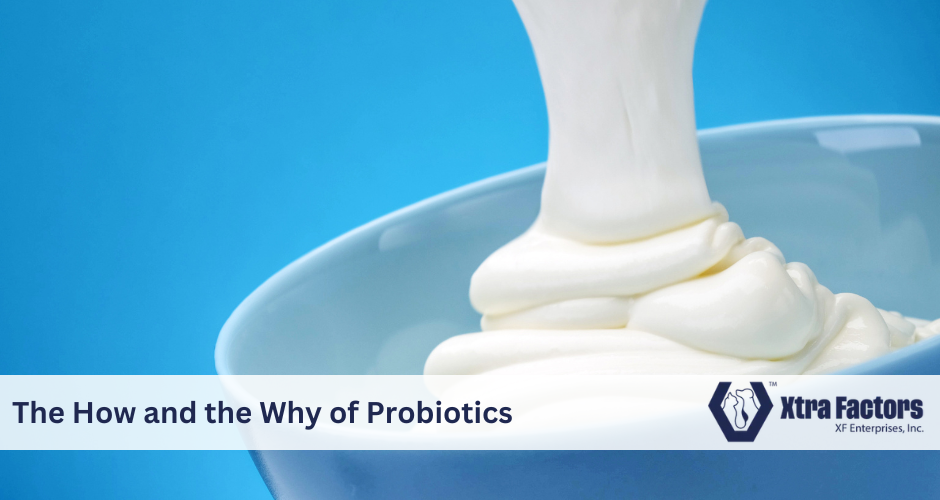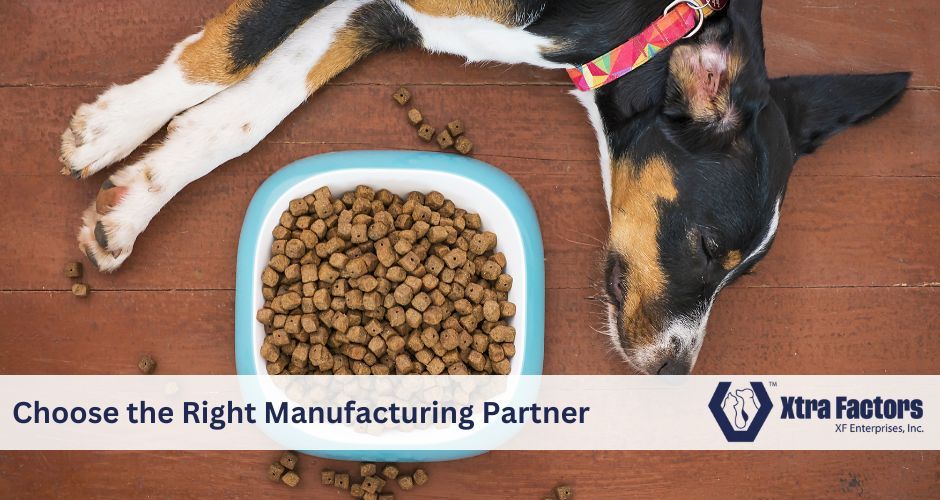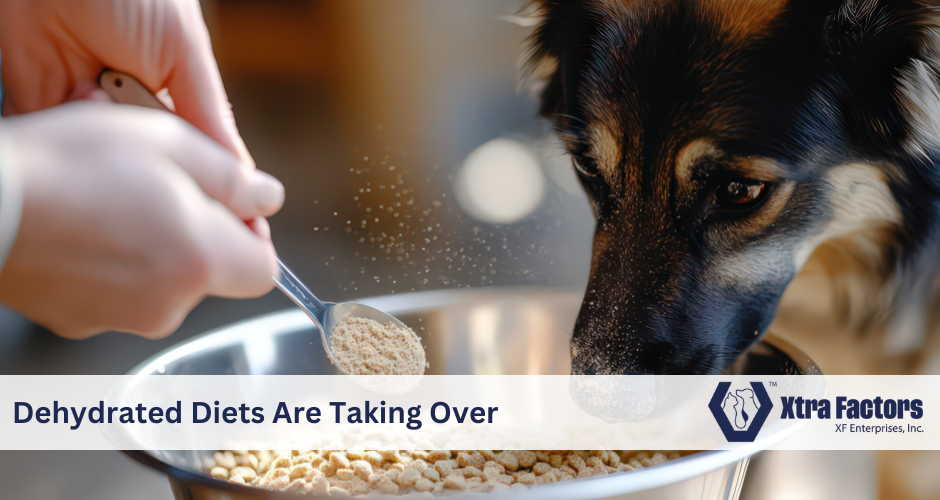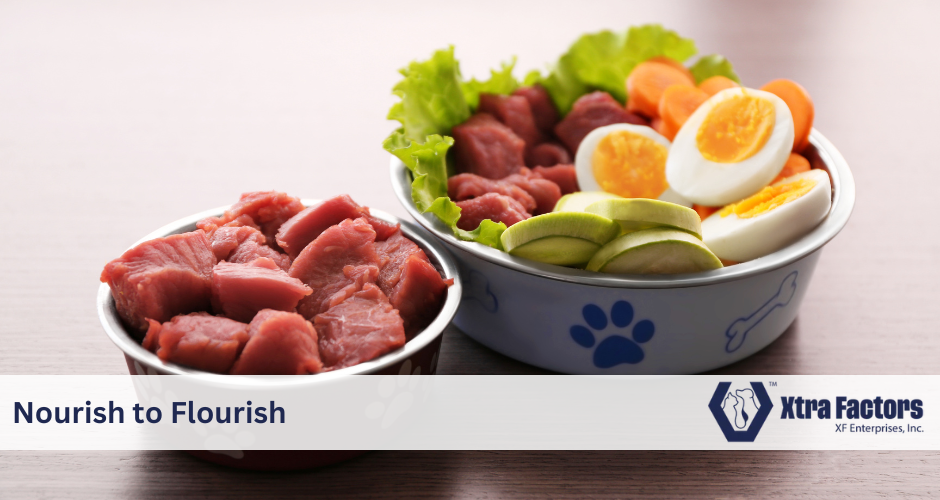December 7, 2025
When you’re building or scaling a pet brand, choosing the right manufacturing partner is one of the most important decisions you’ll ever make. Your manufacturer doesn’t just “make your product” — they become the engine behind your brand’s quality, consistency, safety, and reputation. The wrong partnership can stall growth, create costly delays, or even damage customer trust. The right one can elevate your brand, unlock innovation, and help you scale smoothly. But with dozens of private-label and contract manufacturers out there, and each promising excellence, how do you know who’s truly the right fit? This guide walks you through what actually matters when selecting a manufacturing partner for pet food, treats, toppers, supplements, or any premium product in today’s rapidly growing pet industry. You’ll learn what questions to ask, what red flags to watch for, and how to evaluate a partner’s capabilities with confidence. Start With Their Expertise — Not Just Their Equipment Many brands start by asking about machinery, minimums, or pricing. While those matter, product expertise is a far more powerful starting point. A strong manufacturing partner understands your category deeply. If you create dehydrated or freeze-dried diets, you need a manufacturer who specializes in low-moisture processing — not just someone who also produces kibble and “can probably make it work.” If your brand focuses on functional supplements, you need a partner with real experience working with active ingredients that require precision, stability testing, and proper dosing. Ask them: What categories do you produce most frequently? What product types are you best at? What percentage of your business is devoted to brands like mine? You’re not just buying production capacity — you’re buying their accumulated knowledge. A manufacturer aligned with your product category will naturally make better recommendations, avoid common mistakes, and deliver a smoother experience overall. Quality Standards Are Non-Negotiable Every manufacturer will tell you they “care about quality.” But quality in pet nutrition isn’t a slogan — it’s a system. You want a partner who can clearly explain their quality program, from ingredient sourcing to testing protocols to traceability. They should be able to demonstrate exactly how they prevent contamination, maintain consistency, verify nutrient levels, and stay compliant with AAFCO and FDA requirements. A quality-driven manufacturer will make this easy for you. They’ll walk you through their process. They’ll have documentation ready. They’ll talk about audits, certifications, and controls without hesitation. If a manufacturer can’t articulate their quality system clearly, chances are they don’t have one that’s truly robust. Transparency Builds Trust Your manufacturer should never feel like a black box. A trustworthy partner makes room for your involvement. They welcome questions. They show you how things work. They keep communication open and predictable, so you know what’s happening with your project at every stage. If a manufacturer becomes vague when you ask about processes, avoids direct answers, or rushes you off the phone — that’s a sign they value volume, not partnership. Transparency builds long-term relationships. And relationships are the foundation of a successful pet brand. Communication Can Make or Break a Project One of the biggest frustrations pet brands experience isn’t quality issues — it’s the lack of communication. A great manufacturing partner understands that delays, bottlenecks, and adjustments happen, but they keep you informed. They update you without you chasing them. They provide timelines that are realistic, not overly optimistic. You should never feel in the dark about: Your production date Your testing results Your inventory status Your next steps Any potential issues If communication is poor during the quoting or discovery phase, it will not magically improve after you sign. Innovation Matters More Today Than Ever The pet industry is changing fast. Consumers expect human-grade ingredients, functional benefits, sustainable sourcing, and unique formats. Your manufacturer should not only keep up — they should help you stay ahead. A strong partner can help you: Improve formulas for stability, nutrition, and cost Develop new product ideas Adjust to changing ingredient markets Find functional ingredients that align with trends Scale formulas without compromising quality If they don’t bring ideas to the table, or if every new question is met with “we don’t do that,” you’re not working with an innovation-driven partner. Capacity, Lead Times, and Scalability A manufacturer can check every box — but if they cannot meet your timeline, quantities, or projected growth, the partnership will break down quickly. Talk openly about: Current production capacity Average lead times Their ability to scale as you grow How they prioritize smaller vs. larger clients You want a manufacturer who can support you today but also grow with you tomorrow. Red Flags That Signal Future Problems These warning signs often indicate deeper issues that will cost you time, money, and stress: They refuse or hesitate to give documentation. Quality-minded facilities have nothing to hide. They make unrealistic promises. If lead times or launch dates sound too good to be true, they usually are. You can’t get consistent contact with a project manager. Disorganization now means chaos later. They can’t explain their processes. That often means they lack standardization — a dangerous sign in manufacturing. Everything feels rushed. A good partner wants your product to be right, not just fast. When you see multiple red flags, trust your intuition. There are plenty of manufacturers — you don’t need to settle. Pricing Should Be Considered Last — Not First Cost matters. But cheap manufacturing always comes at a cost somewhere else: lower-quality ingredients, weaker testing, slower timelines, or inconsistent batches. A professional, established partner may cost slightly more upfront — but they save you from product failures, recalls, marketplace complaints, and reformulations. Choose value, not the lowest bid. Your Final Evaluation Tool: The Capability & Confidence Checklist Here is a lean, streamlined checklist you can use when interviewing potential manufacturing partners. It’s the only list in this article — and it covers everything that truly matters: ✔ The Capability & Confidence Checklist Use this to score each potential partner from 1–5 in each category: Category Expertise – They specialize in your product type and understand your format. Quality & Safety Systems – They have clear, documented, verifiable processes. Transparency – They answer questions openly and welcome involvement. Communication – Timely, clear, proactive communication from the start. Innovation Support – They help refine ideas, formulas, and new concepts. Capacity & Scalability – They can meet your needs now and in the future. Reliability – Their timelines, answers, and expectations remain consistent. Cultural Fit – They feel like a team you’d want to work with long-term. Pricing Alignment – Their pricing matches your financial model and quality goals. If a manufacturer scores high in most of these areas, you’ve found a solid partner. If they fall short in several — especially transparency, quality, and communication — keep looking. Final Thoughts Choosing a manufacturing partner for your pet brand isn’t just a procurement decision. It’s a strategic investment in your brand’s future. The right partner brings expertise, reliability, innovation, and quality that elevates your entire business. The wrong one slows you down and creates barriers at every turn. Take your time. Ask questions. Trust your instincts. And remember — a great manufacturer isn’t just producing your product. They’re helping you build a brand that pet parents trust and pets love.





